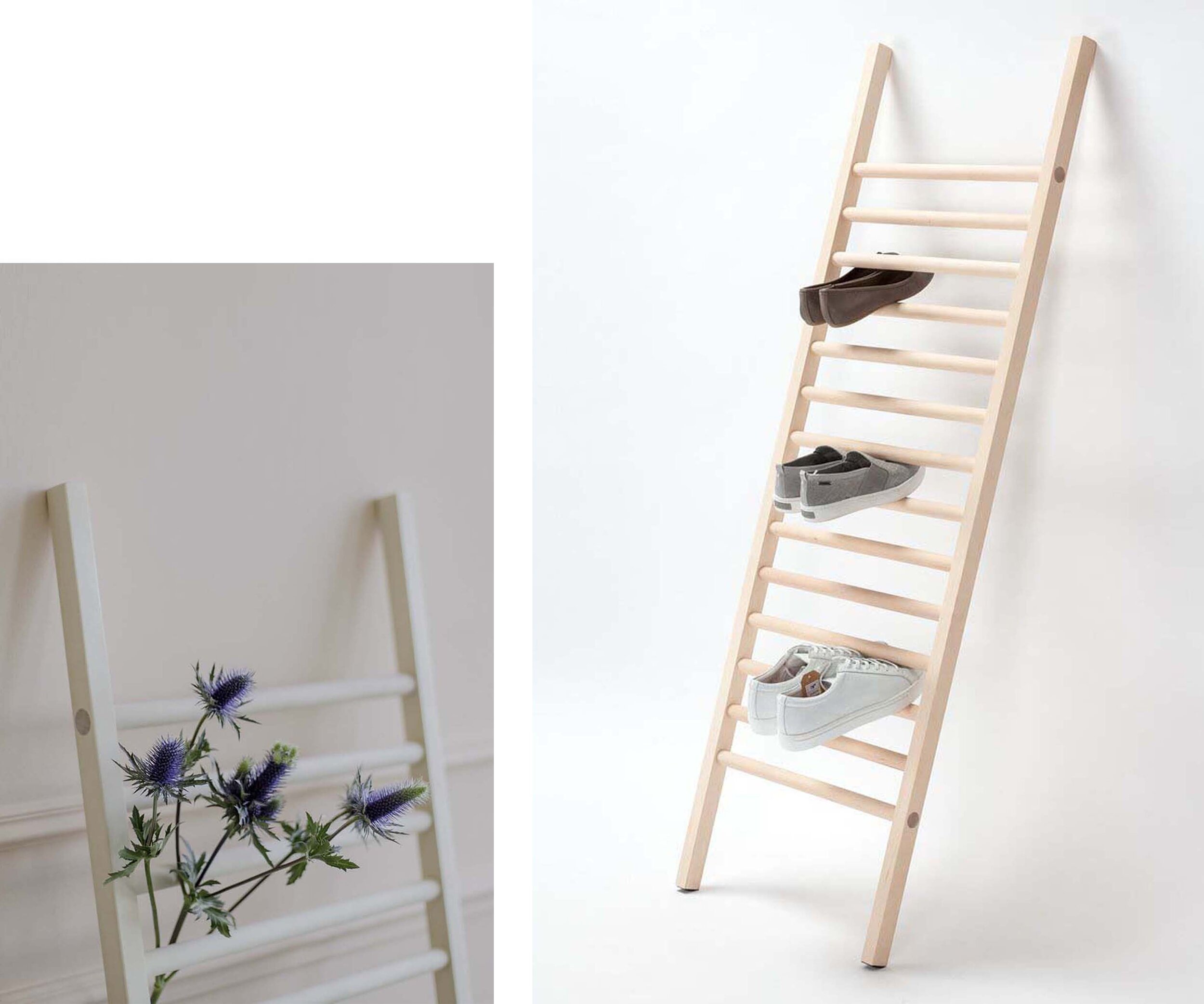MEET A DESIGNER #5:
TORE BLEUZÉ
Design that is independent of time, without any need to be replaced because of its outdated looks — isn't it an extra step towards sustainability? Besides, it happens to be a rewarding investment for both its users and creators.
In our fifth design story, we introduce one more talented creative we collaborate with. Meet Tore Bleuzé — a full-time industrial designer, combining functionality and simplicity to create honest, meaningful, and long-lasting designs. Examples of such: Step Up shoe rack and Torch hooks, designed for and successfully integrated into EMKO furniture collection.
KICKSTARTING EMKO WITH STEP UP
"Step Up shoe rack is one of the pioneer products we started our journey with. A bestseller back then and still an eyecatcher ten years after — possibly, a timeless piece? Obviously, design does not have to be all flamboyant to find a place at our homes, to serve a function, and ultimately, to make our daily life more pleasant”. Designed for shoes primarily, Step Up is open for creativity, making it a versatile piece. Also, exploiting vertical space, the Step Up shoe rack is an excellent benefit for smaller spaces.
LEVERAGING COLLECTION WITH TORCH
"Once we meet a designer of mutual approach, we tend to keep the collaboration going — this way, wooden Torch hooks created by Tore Bleuzé joined our collection in 2019. Sharing similar aesthetics, hooks perfectly complement Step Up when more storage options are needed or go well on their own, decorating the walls of your own cozy castle", says EMKO Sales Executive Manager Inga Markovska-Malinauske. Both Step Up shoe rack and Torch hooks stand out as two resilient solutions — appreciated no matter the trends, able to build a strong emotional tie, and serve generations to come.
CURIOUS HOW SUCH DESIGNS ARE BORN?
Take a look at the creative process of Tore Bleuzé — from daily inspirations to common challenges, all finally composing into a well-thought piece.
Tore, what is your favorite part of being a designer?
It is very satisfying to see if an idea becomes a real product. Developing an idea into a product is a long process. At first, it only exists in your imagination. By making sketches and prototypes, it becomes more tangible, and you can refine it by verifying with others.
It is also great to see if a product is available on the market so that people can enjoy your creation.
How would you describe your personal style?
It would be tough to select only one specific visual style. I do a lot of design work at request for clients and work on a wide range of products — from (outdoor) furniture, home accessories, consumer goods to even the styling of more industrial products like machines and water softeners. Each material and production process gives opportunities that lead to another design language. Personally, I prefer honest and pure designs.
Where does your inspiration come from?
I am a collector. I collect things that look interesting to me. I have an inspiration wall in my office where I keep all my stuff — books, magazines, material and production samples, small prototypes or samples from previous projects. It is organized chaos. Most things are grouped by theme or material. I go through all the objects regularly and stumble upon new ideas.
Besides this, I also have online inspiration boards on Pinterest for different subjects. One of my personal projects is Design to Connect. This is an online database with inspirational joining methods I found on the internet and share with other people.
Which aspects of design you give the highest priority to?
I think a good product has the right balance of different aspects: good usability, nice aesthetics, sustainability, affordability, etc. As a designer, you must consider all these aspects and make decisions. This is not easy because all the elements are related — if you improve one, it may affect the others.
How do you know when an object is finished and needs no additional work?
If I work on a request, the client or deadline determines when a project is finished. It is more complicated for personal projects — there is less time pressure, and you can always doubt a decision. Usually, I stop if a solution feels right to me. It is difficult to describe, but mostly successful solutions are not complex and answer different demands.
What, according to you, is the role of collaboration in design?
Collaboration plays a key role in the design. Most products are not designed by one person but by a team of various professionals. The results you can achieve with a good team transcends what you can achieve alone. I tend to work in close collaboration with the production and/or internal design team for some clients and even become a member of their team. In this case, you have a better feeling about the philosophy of the company. Discussing ideas with other people can give you new insights and even lead to better solutions.
Is there any particular message you'd like to convey by your designs?
I try to create meaningful products with an added value. This can be functional, aesthetical, or even an optimization in production, which leads to a more sustainable solution.
BLITZ QUESTIONS
Favorite work tool?
A biro or pencil is still very useful to generate or communicate ideas.
Best soundtrack for design?
It really depends on my mood. This can be electronic music, jazz, soul, or rock songs.
Design-related content you'd recommend checking out?
I enjoy books that focus on materials and production processes like these from Rob Thompson “Manufacturing Processes for Design Professionals” and Chris Lefteri “Making It”.
What's the closest thing to real magic? ✨
When you present an idea or proposal to a client, and they are immediately convinced and think in the same direction.






